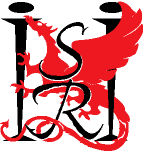
Institute for Software Research
School of Computer Science, Carnegie Mellon University
Human and Organizational Risk Modeling:
Critical Personnel and Leadership in Network Organizations
Craig Schreiber
August 2006
Ph.D. Thesis
Network organizations offer learning, adaptive and resilient capabilities
that are
particularly useful in high velocity environments as these capabilities
allow the
organization to effectively respond to change. The dynamic, evolutionary
nature of
network organizations affords such advantageous capabilities. Although
the advantages
of network organizations are well-studied, the risks associated with
them are not. Of
interest is the study of critical personnel. Understanding criticality
within an organization
can help improve performance and protect against the risk of loss. But
the study of
critical personnel has traditionally used static structural representations
that do not
represent the dynamic nature of network organizations.
This thesis advances the study of critical personnel risks in network organizations by using Dynamic Network Analysis. Dynamic Network analysis is a methodology that incorporates both social network analysis and multi-agent simulation to represent structure and process the evolutionary nature of network organizations. Advances are made on two fronts. First, theory is developed about three dynamic risks related to critical personnel: intermittent availability, individual redundancy and shifts of critical personnel. These theories are built by using a reasoned computational approach that first validates the multi-agent simulation model and then creates forward grounded theory. Empirical data from two different network organizations are used to validate the model and build theory.
Second, the foundations for a Dynamic Network Analytic Theory of Network Organization Leadership are established. Leadership is a subset of critical personnel and the specific risks of network organization leadership need studied as well. But traditional leadership theory has limited applicability to high velocity contexts and network organizations. Consequently, there has been a call for a paradigm shift in leadership theory. The effective study of risks associated with network organization leadership will require a relevant paradigm and theory. This research developed a relevant paradigmatic framework and provided basic insight for a theory of network organization leadership.
178 pages
Return to:
SCS Technical Report Collection This page maintained by [email protected]
School of Computer Science homepage